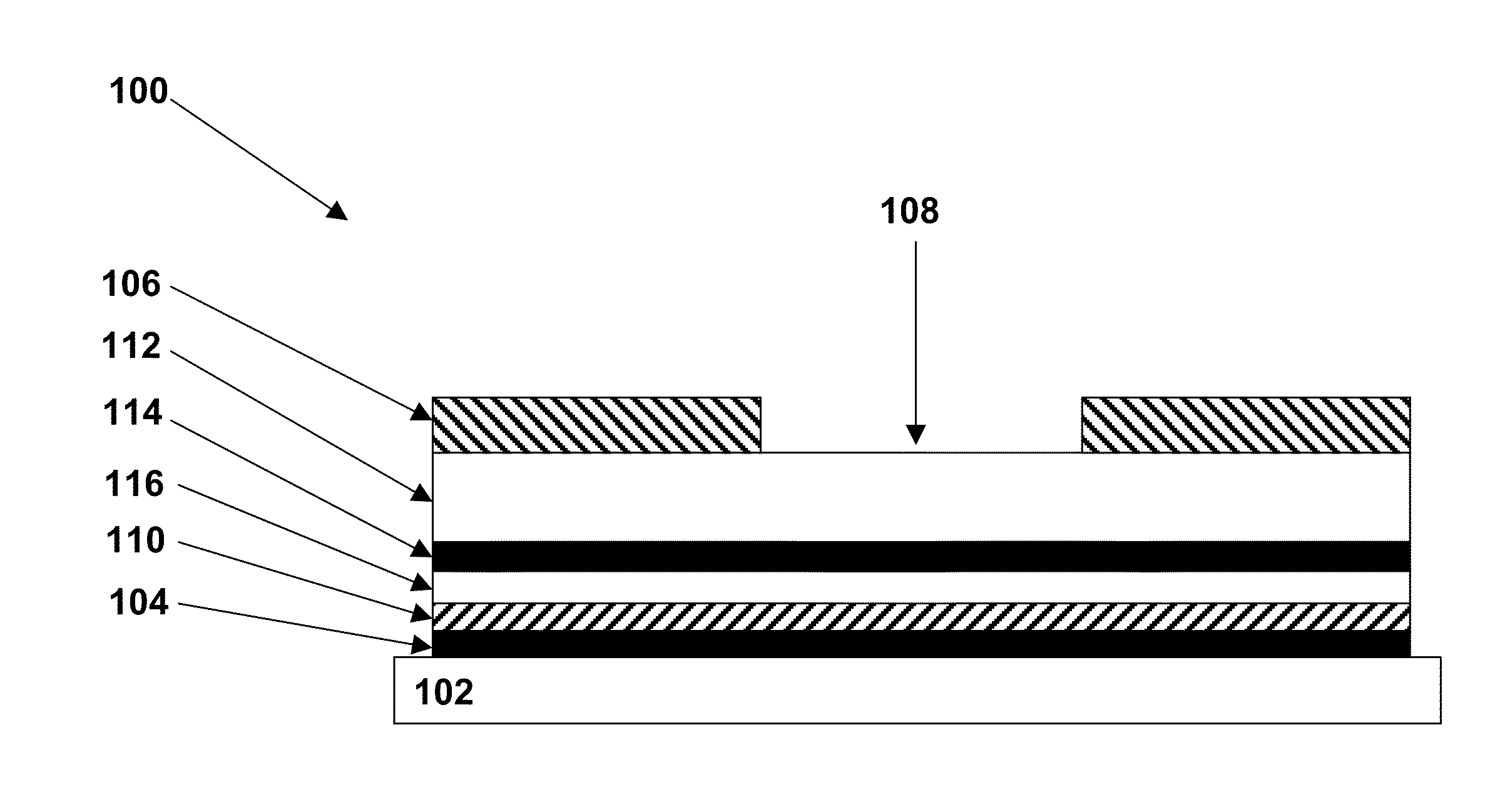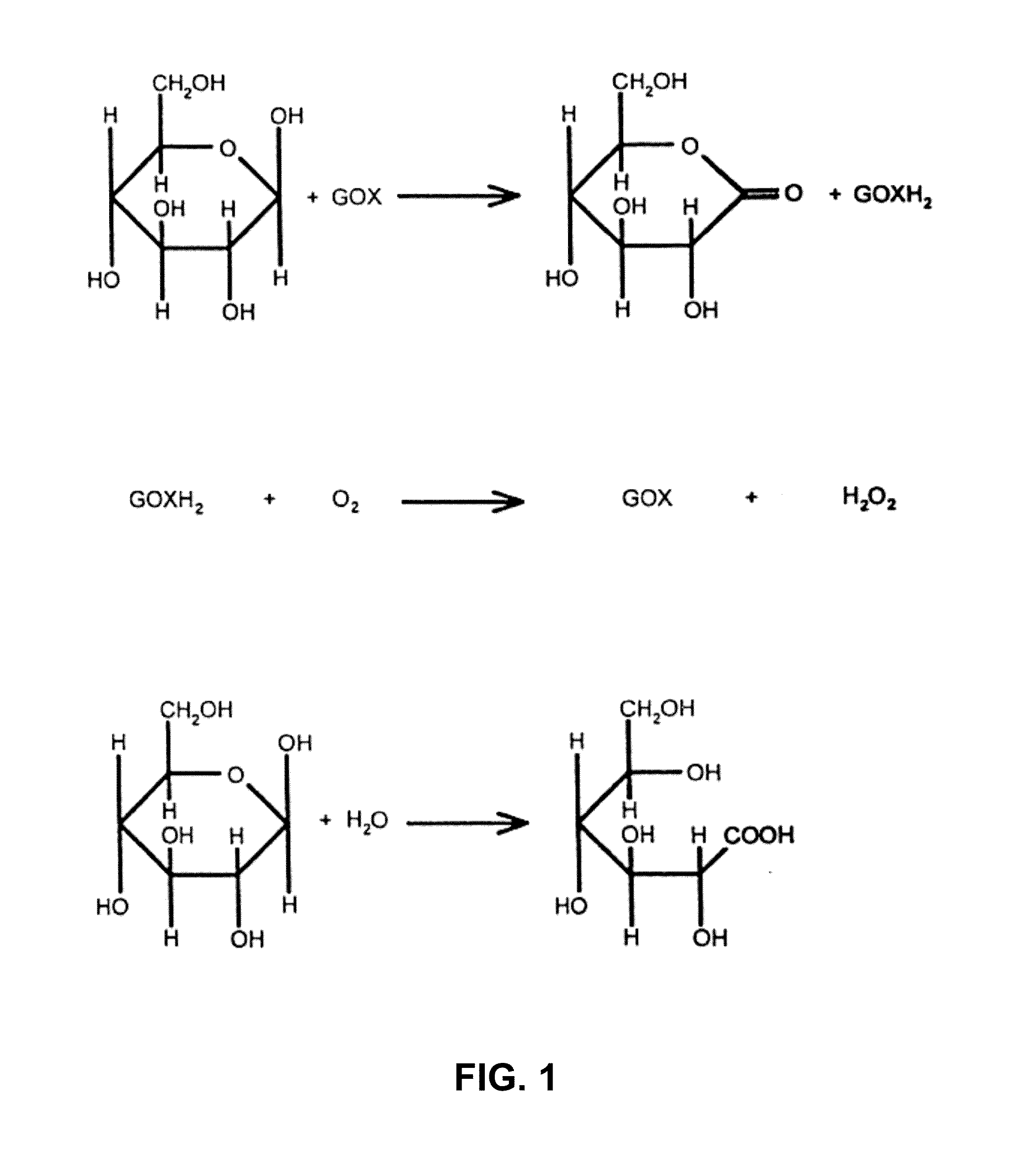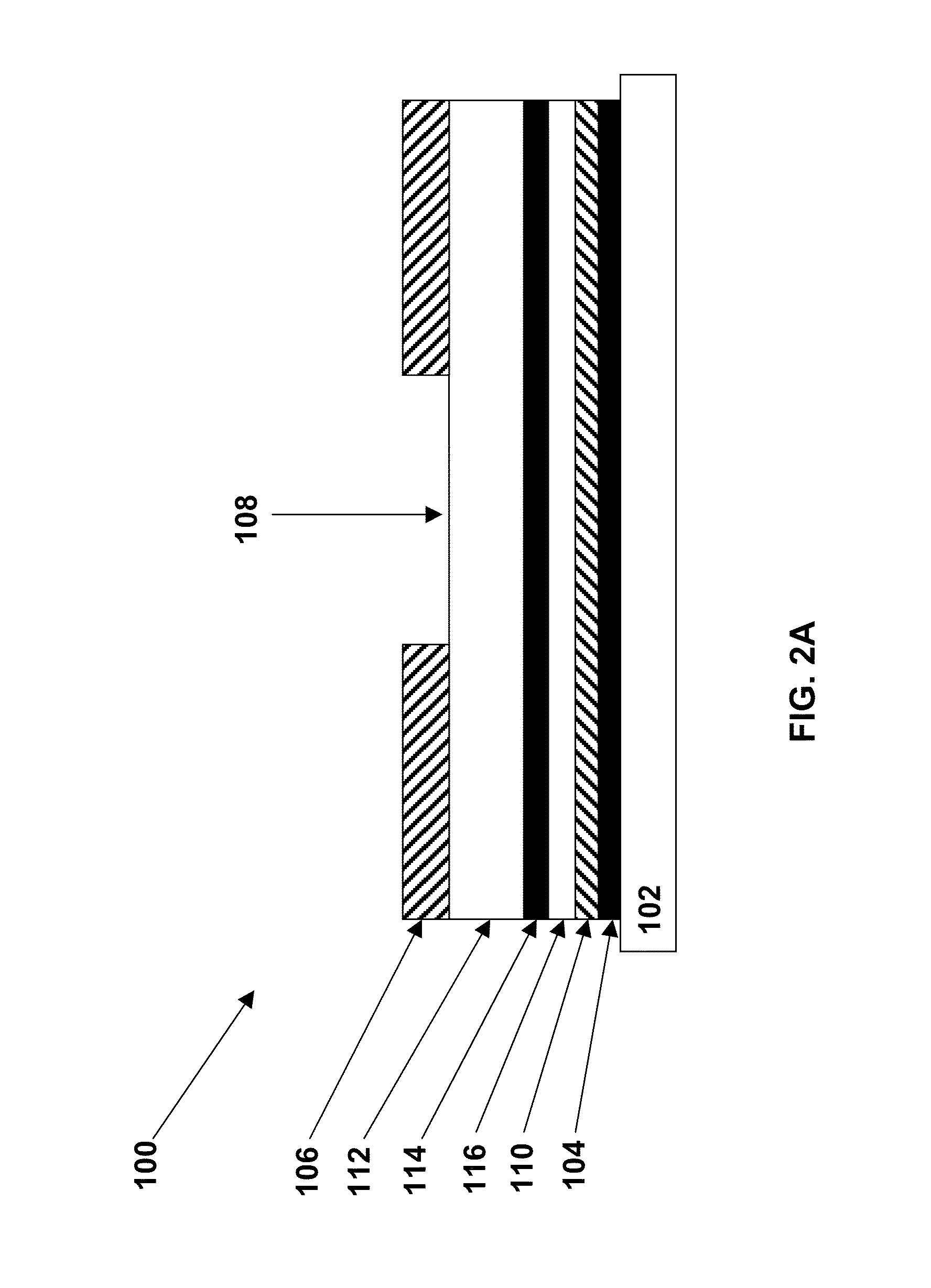Sensor systems having multiple probes and electrode arrays
- Summary
- Abstract
- Description
- Claims
- Application Information
AI Technical Summary
Benefits of technology
Problems solved by technology
Method used
Image
Examples
example 1
Illustrative Structure for a Hospital Glucose Sensor
[0121]In typical hospital sensor embodiments, there are two sensor probes that are inserted in vivo. Each probe contains two sensor arrays with each array comprising a working, counter and reference electrode. Each array is a full glucose sensor electrode system, thus on a single hospital sensor it is comprised of a total of four independent glucose sensor electrode arrays.
[0122]One illustrative layer of functional compositions that is disposed on an electrode within an electrode array is illustrated in FIG. 2C. The IRM is comprised of pHEMA and silane and is deposited using a spray application. A thicker layer of IRM is typically applied on the hospital sensor to reduce the response to 20 mg / dL acetaminophen. This sensor with this IRM has a 50% response to 20 mg / dL acetaminophen.
[0123]The analyte modulating layer in this sensor comprises a glucose limiting membrane (GLM). The GLM layer comprises a blended mixture of a linear polyu...
example 2
Illustrative Continuous Glucose Monitoring Algorithm
[0125]In certain embodiments of the invention, the continuous glucose monitoring (HCGM) system consists of a quad-sensor (four sensors as a set), a sensor processor and a monitor. All of the four sensors in the quad-sensor set are electrochemical sensors with three electrodes: a working electrode, a reference electrode and a counter electrode. There are two groups of sensors in the quad-sensor set. In one group, the sensors have a first “full-sized” working electrode with a first electroactive area. They are called full-size sensors (FSS). In the other group, the sensors' working electrode is half of the size of the FSS. They are called half-size sensors (HSS). In the quad-sensor set, there are two sensors in FSS group and two sensors in HSS group. Each of the four sensors will generate two signals. One is the current signal Isig, which measures the response of the sensor to the glucose level. The other is the voltage signal Vcount...
example 3
Glucose Monitoring Systems Exhibiting Enhanced Performance in the Critically Ill
[0152]The disclosure provided herein provides methods and materials for combining sensor readings to give a single output. The performance of most continuous monitoring sensors today is characterized by the mean absolute relative difference (MARD). Using this criteria, the above-noted sensor structures (in which each patient had two sensors) in combination with the algorithms designed for use with such structures were shown to exhibit surprising good properties. Specifically, the individual sensor performance was at about 16% MARD. With the algorithms disclosed herein where the sensor data is combined (by for example, determining a mean value for a signal obtained from the multiple electrode arrays; and / or determining a standard deviation for a signal obtained from the multiple electrode arrays), then assessed for performance, which showed an 11% MARD; a significant difference.
Methods:
[0153]A study was c...
PUM
 Login to View More
Login to View More Abstract
Description
Claims
Application Information
 Login to View More
Login to View More - R&D
- Intellectual Property
- Life Sciences
- Materials
- Tech Scout
- Unparalleled Data Quality
- Higher Quality Content
- 60% Fewer Hallucinations
Browse by: Latest US Patents, China's latest patents, Technical Efficacy Thesaurus, Application Domain, Technology Topic, Popular Technical Reports.
© 2025 PatSnap. All rights reserved.Legal|Privacy policy|Modern Slavery Act Transparency Statement|Sitemap|About US| Contact US: help@patsnap.com



